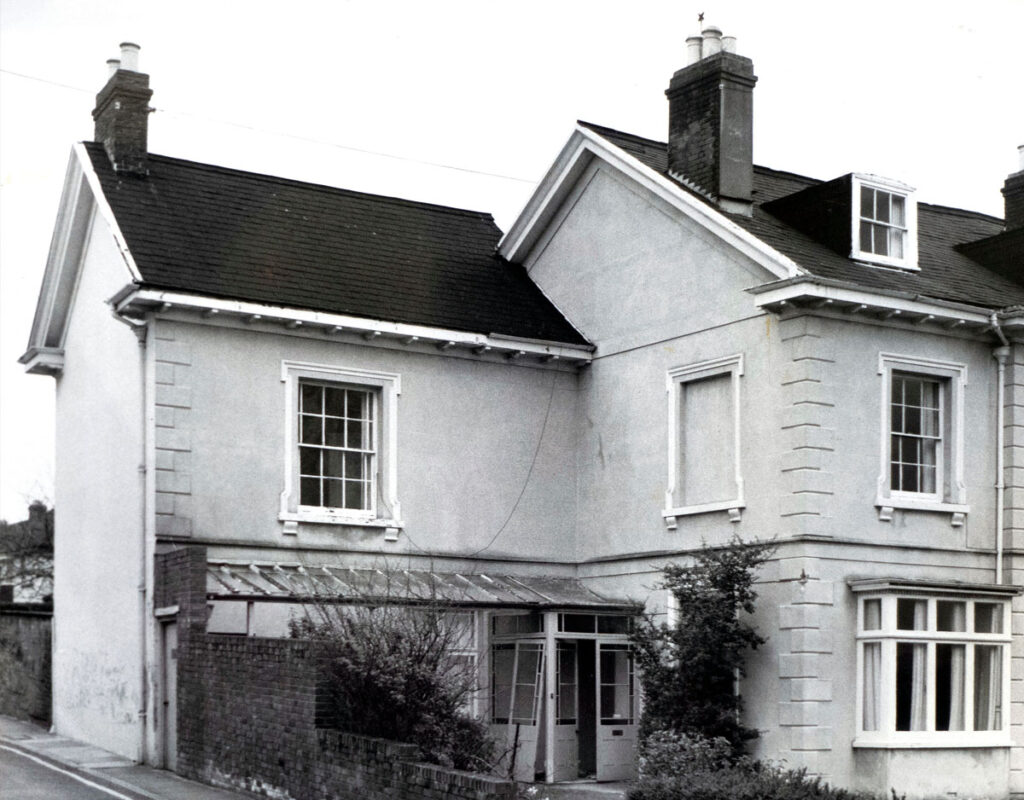Researched by Heritage Advisory Group
Elm Grove Road descends from Howell Road to meet New North Road. It was originally part of Pound Lane which in 1864 was renamed Elm Grove Road. The area is of considerable character with high quality listed buildings dating from the 1860s, mainly stuccoed pairs in the Regency style with large front gardens and driveways. The buildings have a south-westerly orientation overlooking Bury Meadow Park and direct views of St David’s Church.
The three-storey semi-detached Velwell Villas in Howell Road and the lower houses of Elm Grove Road form an enclosure to Bury Meadow. These houses were designed by a local builder, John Ware, who was responsible for many grand terraces in the St David’s area, including the terraces in New North Road between the clock tower and the prison.
They are in an old-fashioned style for their date, possibly due to the aesthetic prejudices of their builder, who rejected the contemporary fashion for Gothic in favour of classically-inspired designs in the Regency tradition. Ware’s son, Charles, later founded a firm of architects which still practice in the city today. John Ware’s houses have unifying features of Italianate inspiration, such as stucco render with rusticated quoins, eared window surrounds to the many-paned sash windows and deep eaves with brackets at the roofline. Their entrances lie at the side of the building, as was common in the informal picturesque planning of the period, and many are still sheltered by ornate conservatories. The row of eleven houses had been built in about 1840.
The inhabitants were more likely than many fellow St David’s parishioners to have indoor servants. In 1871 the inhabitants of Number Two were looking for ‘a good steady general servant of good character’. The household only comprised two residents who `retired at nine o’clock, winter and summer’. The latter may have been more particular than it first appears. That year the owner, `an aged retired widow’, was also searching for a housekeeper aged about forty `whose sentiments entirely agree with Gadsby’s Gospel Standard’, the early nineteenth-century Baptist hymnbook. The `good, healthy and pleasant house’ had `early hours, plain living’.
In 1870 a young lady was required at Number Six `to take charge of four young children and teach music’. Forty years later in 1910 that building was described as `one of the most comfortable residences in the district’ with 3 attic bedrooms, a box room, 4 good bedrooms and excellent bathroom on the first floor and three reception rooms and good kitchens on the ground floor. At the side of the house a glass-covered way with tiled floor formed the entrance and there was a separate door for tradesmen.
